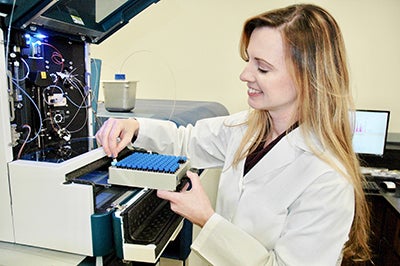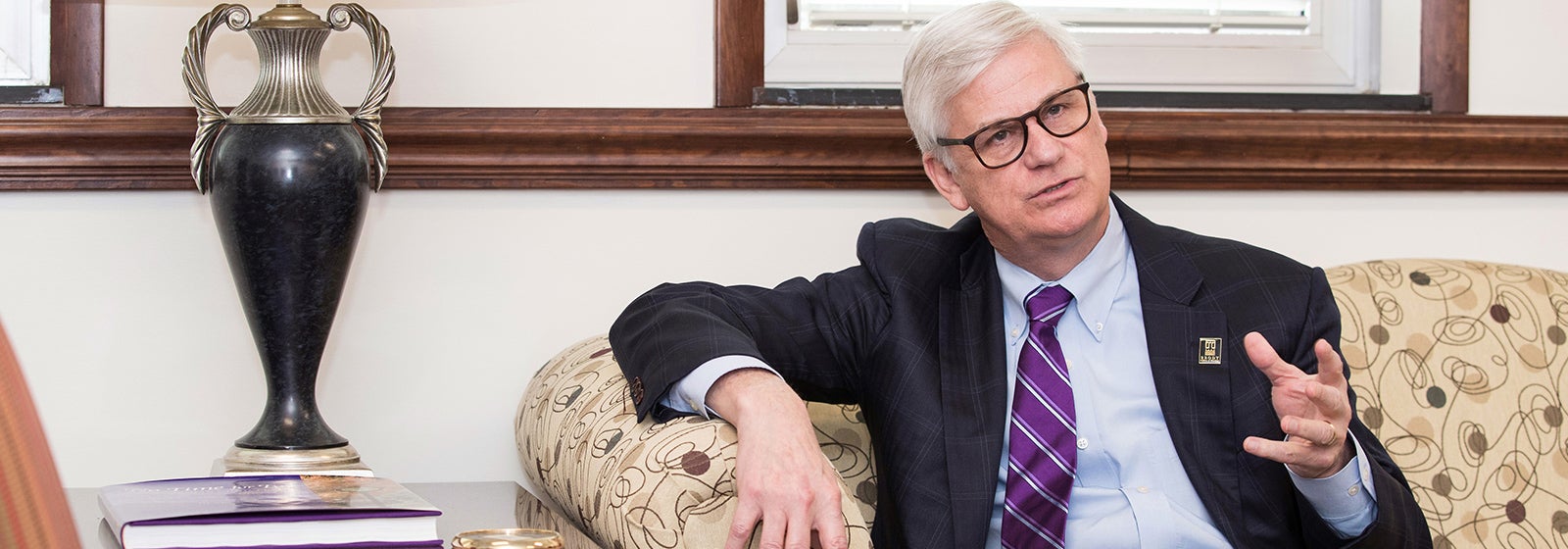BUILDING A BETTER BRODY
Brody School of Medicine dean awards $2.6M for faculty initiatives
When Dr. Mark Stacy was interviewing to be the next dean of ECU’s Brody School of Medicine, he got the sense that it was an institution that had learned to “do more with less.”
While there are some benefits to faculty operating under those conditions – such as forcing the better utilization of resources and more creative thinking – Stacy said that doing more with less had “gradually caused a reduction in our ability to compete.”
As a result, Stacy announced in September that he would dedicate a portion of his $7 million start-up package to help fund initiatives that members of the faculty and staff felt would help improve the experience of working at Brody.
Stacy’s call for proposals yielded 60 requests for funding from faculty members, totaling more than $6 million. Of this total, more than $2.6 million was awarded to 35 separate proposals.
“People worked very hard on these proposals, so it was pleasantly difficult determining how to find the best ways to fund some of them,” Stacy said.
In addition to the faculty initiatives, another $334,000 was approved to fund proposals from Brody staff members. This was the first time a Brody dean set aside budget for funding suggestions from staff, according to Gary Vanderpool, executive associate vice chancellor for health sciences administration and finance.
“Initially, the dean had set aside $100,000. And when all of these proposals came through, there was the belief that there was more than $100,000 worth of good projects in here. So that amount actually tripled,” Vanderpool said.
An exciting push for research
The major areas funded from faculty proposals were core laboratory resources and resources that could be leveraged to benefit more than one department.
The highest amount awarded was $604,000 for a new mass spectroscopy instrument for the core lab housed in the Brody School of Medicine.
Mass spectrometers are analytical instruments used for identifying compounds based on their mass to charge ratio, isotopic signature, and molecular fragments.
The facility received funding last year for a similar mass spectrometer, capable of doing both metabolomics and proteomics research. However, that instrument quickly became a victim of its own success as demand for it grew.

Dr. Kim Kew, director of mass spectrometry services at East Carolina University, works with a mass spectroscopy instrument at the Brody School of Medicine. (Photo by Rob Spahr)
“Every time I had to flip it to a different mode, there would be significant downtime,” said Dr. Kim Kew, director of ECU’s mass spectrometry services. “To keep up with sample demands, you can’t afford to be down a week.”
The new mass spectrometer will be dedicated to proteomics, freeing up the instrument purchased last year for more metabolomics research opportunities.
The mass spectrometry center is working on more than two dozen projects for more than 15 different departments, including a metabolomics analysis of umbilical cords for drugs of abuse and a proteomics analysis of a triple-negative breast cancer model. This list will likely grow significantly thanks to the funding of the second mass spectrometer, Kew said.
“There’s such a huge need for it, so this is a university-wide purchase that really is supporting the goal to grow together,” Kew said. “It’s so cool and exciting to be a part of that push for research.”
Refining repertoire of skills
Not all of the proposals were high-dollar initiatives like the mass spectrometer.
Laura Bliley, assistant director of nursing and allied health education at Eastern AHEC, requested $5,000 to help fund programs to teach health care providers how to better handle “difficult” conversations with patients.
“These incidents occur where patients are angry or upset, and the providers are kind of caught off guard and in the moment may not have the skills to deescalate that and get to the root of what the patient’s fears and concerns are,” Bliley said. “The problem this creates for the provider, of course, is the frustration and the feeling that they haven’t met the patient’s needs and that the patient may be lost to follow-up and not get the care they need.”

Eastern AHEC will host a pair of workshops on May 18 to better prepare health care providers for difficult conversations they must have with patients. (Photo by Alex Raths)
Examples of difficult conversation topics physicians must have with patients every day include:
- Tapering or eliminating the amount of opioids being prescribed to a patient for pain management
- The need for a dementia patient to give up a certain freedom, like driving, for safety reasons
- End-of-life decisions
- Sexually transmitted infections
The dean’s funding will help Eastern AHEC host a pair of workshops on May 18, during which four dozen health care providers will learn and practice effective interpersonal communication skills during emotionally charged encounters with standardized patients.
“It will help the providers refine their repertoire of skills that they can use and increase provider resilience and patient satisfaction, and increase their outcomes,” Bliley said. “The focus of this really is more on the therapeutic communication than the clinical state or diagnosis.”
Doubling research dollars
An additional $1 million in faculty proposals was earmarked for possible funding through alternative means.
“We were creative in looking at other sources of funding that fit them better. So if it really was not a research-oriented proposal, we moved that into other areas where there were some monies available in the school,” said Stacy, who credited Vanderpool for that creativity.
Funding the proposals was important to improve morale at Brody and to allow people to “have a little more fun,” Stacy said.
“If you’re able to test your samples more precisely and more conveniently, your data are going to be better, you’re going to be able to publish better papers and write better grants. And that makes it more fun,” he added.
Stacy said he has always been impressed with how proud eastern North Carolinians are of Brody, and that if the school is going to improve on its promise to provide care and resources to eastern North Carolina, it will have to do that with education, the recruitment of students and physicians, and with research.
“I’m hopeful that the community sees that we are going to work purposefully toward the chancellor’s goal of doubling research dollars for the institution within five years and we are up to that task,” Stacy said.
